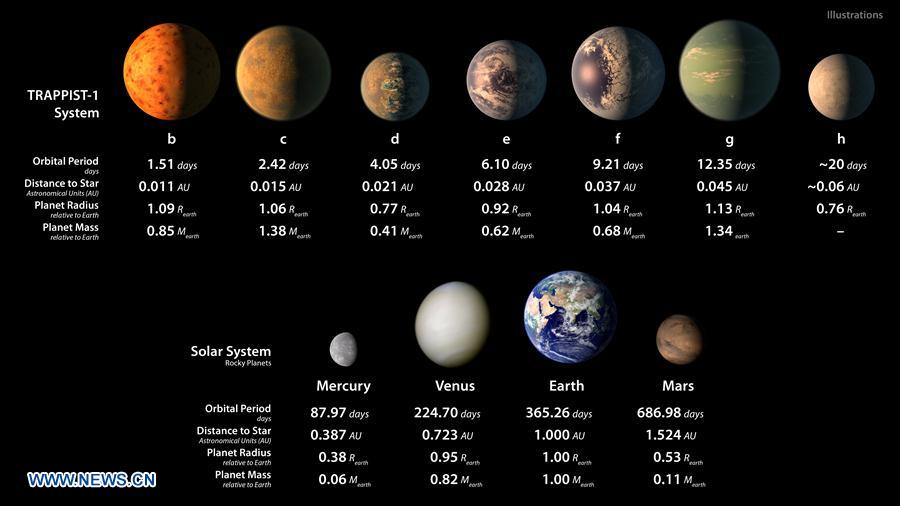
The chart released by NASA on Feb. 22, 2017 shows on the top row, artist concepts of the seven planets of TRAPPIST-1 with their orbital periods, distances from their star, radii and masses as compared to those of Earth; on the bottom row, the same numbers are displayed for the bodies of our inner solar system: Mercury, Venus, Earth and Mars. A compact analogue of our inner solar system about 40 light years away from the Earth has been discovered, NASA announced during a press conference on Wednesday. An international team of astronomers using powerful space telescopes and ground-based observatories have discovered the first known system of actually seven Earth-sized planets orbiting the nearby TRAPPIST-1, which is relatively close to us, in the constellation Aquarius. And three of these planets are firmly located in the habitable zone, the area around the parent star where a rocky planet is most likely to have liquid water. (Xinhua/NASA/JPL-Caltech)











